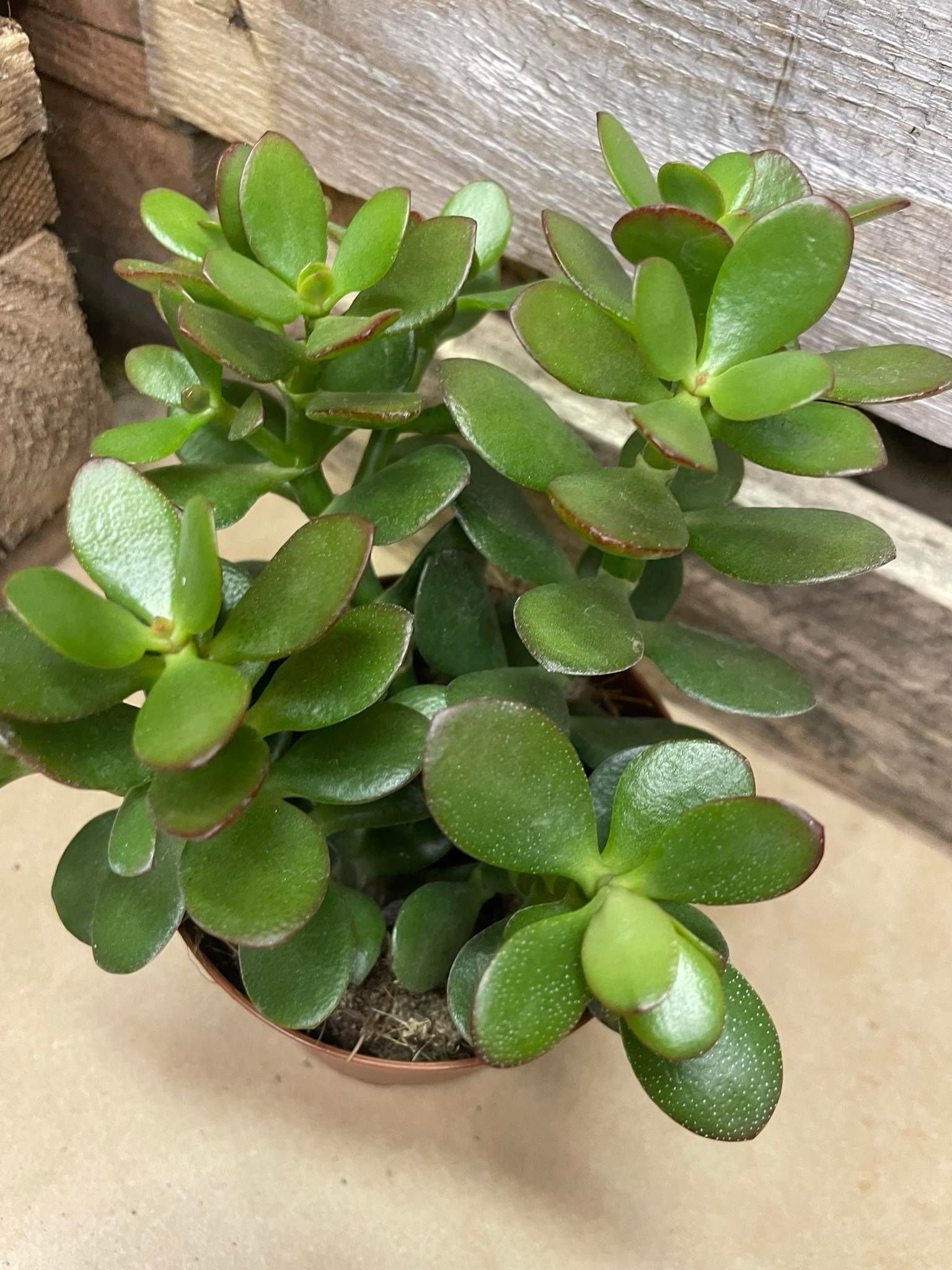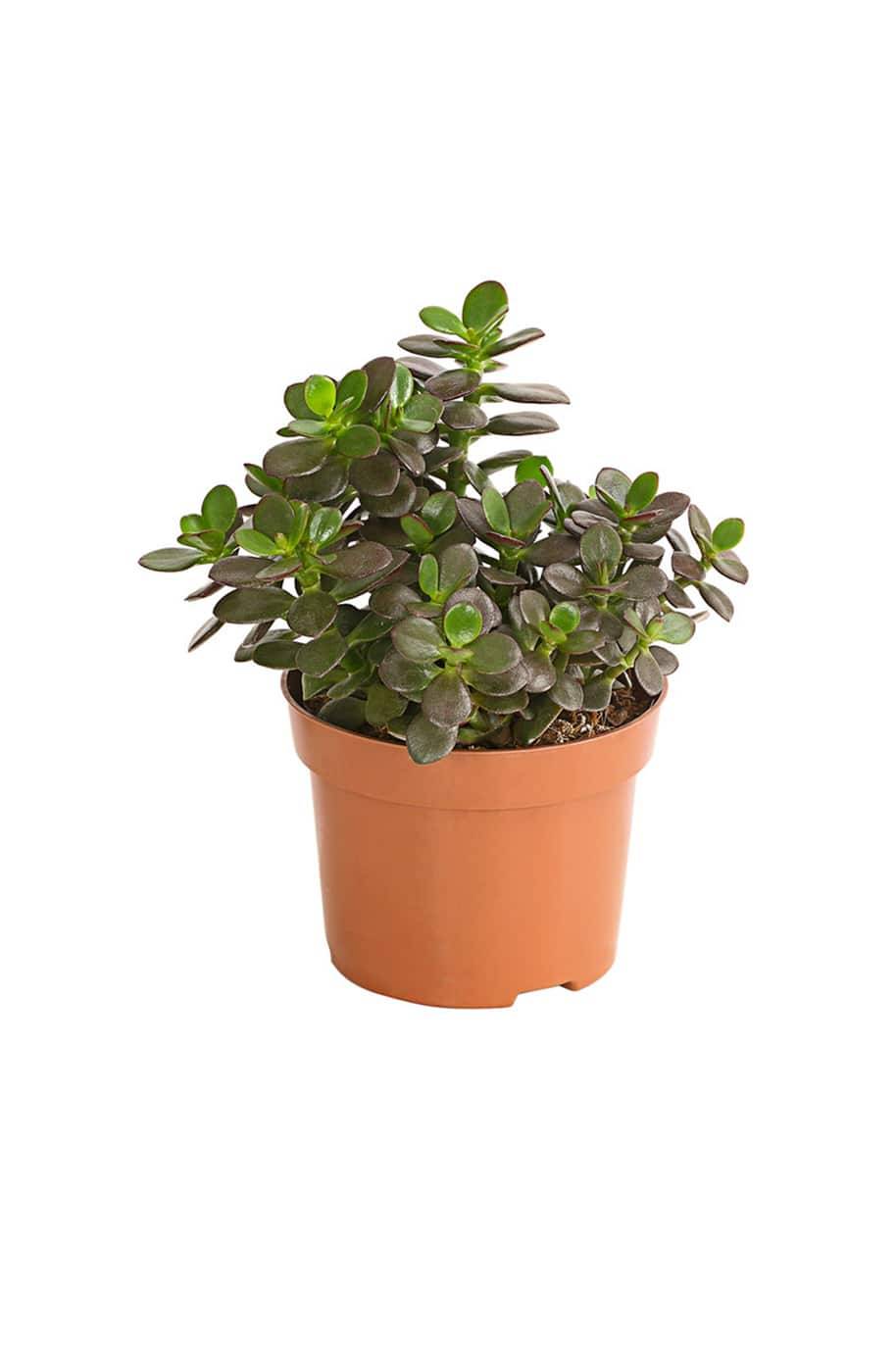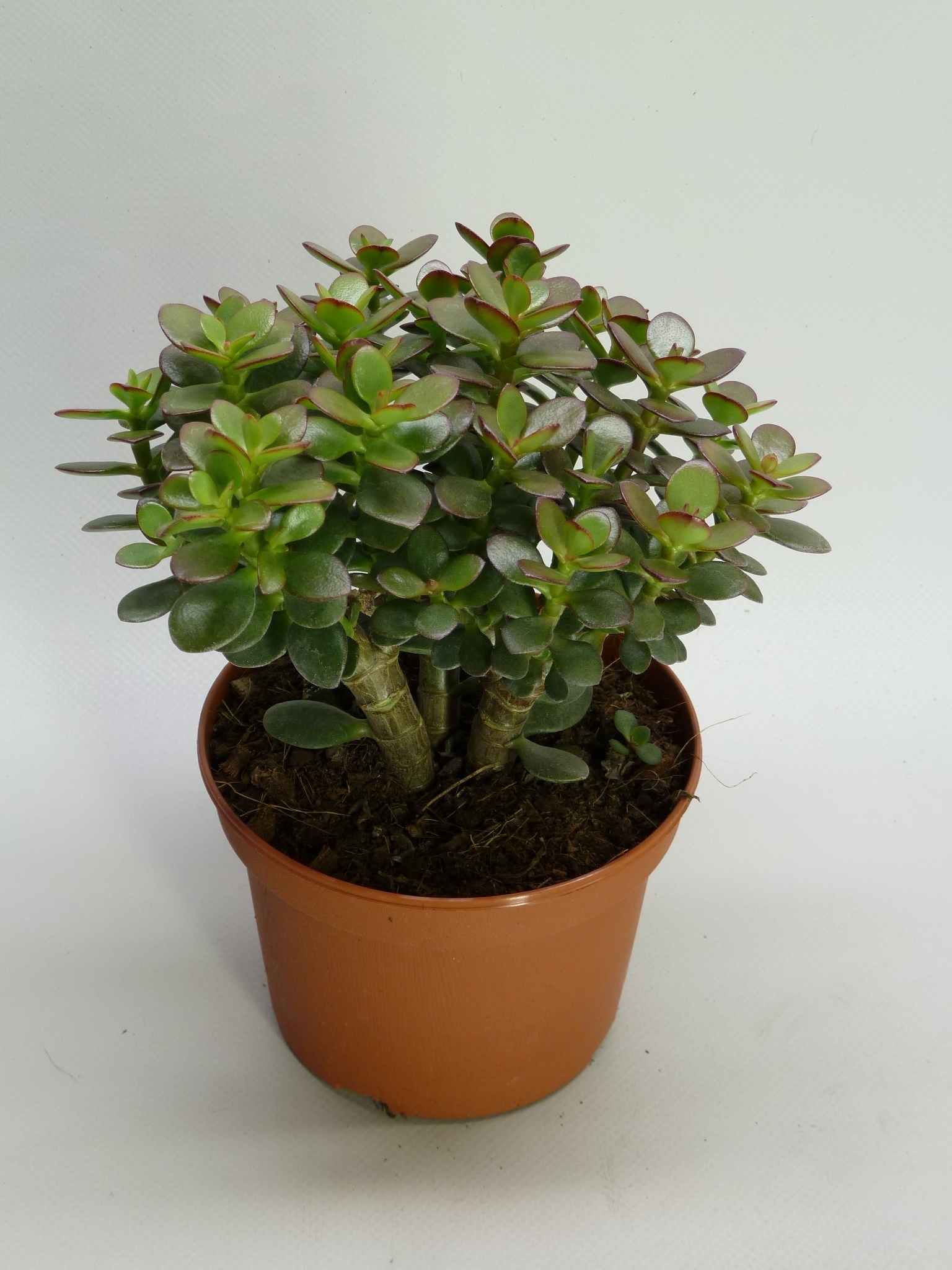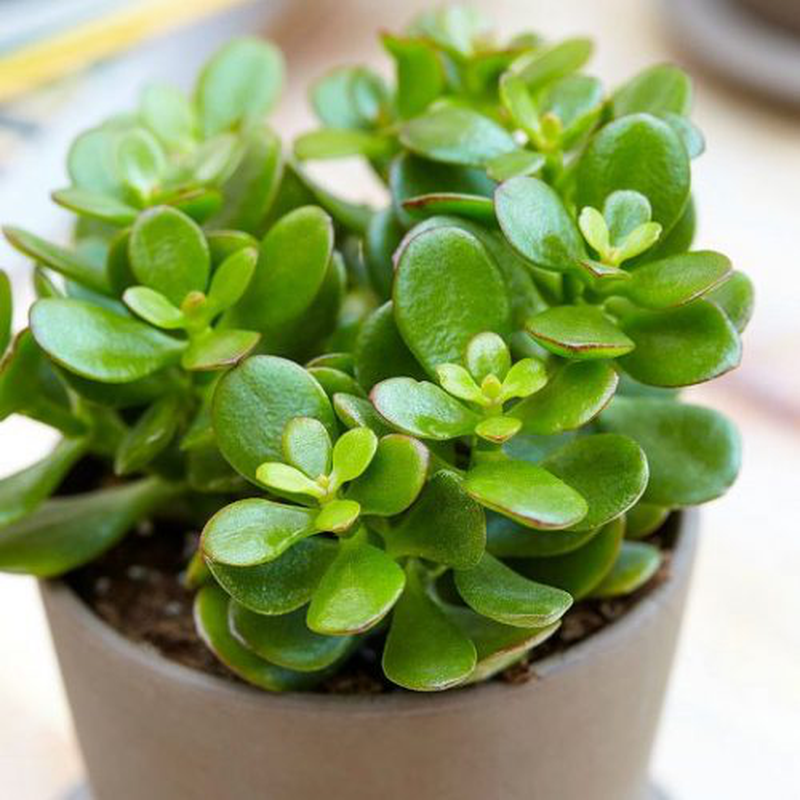
Crassula Ovata Minor “Baby Jade” • F'Laura n' Company Greenhouse
Jade Plant Care Requirements ( Crassula ovata) Scientific Name: Crassula ovata. Common Name: Jade plant, money plant, lucky plant. Origin: South Africa and Mozambique. Light Requirements: Mix of direct and bright, indirect light. 4-6 hours of direct sunlight is ideal. Watering: Water thoroughly once the potting mix is dry.

Crassula ovata 'Minor' Grubosz owalny
Although your crassula cutting will need water and moisture in its early days, you can water it less as it matures. Place the cutting in a pot of damp soil. Once the callus has formed, fill your clay pot with damp soil, and place the leaf or stem cutting into the soil. Keep the soil moist in the early stages. While mature succulents don't.

Crassula Ovata Minor Jade Plant Indoor Plants
Caring for a jade plant. How to grow a jade plant - Crassula ovata. Getty Images. Water thoroughly once the top 2-3cm of compost have become dry (stick your finger in to check). Allow any excess to drain away. Water sparingly in winter. Feed with a half-strength liquid feed once in spring, summer and autumn.

Crassula Ovata 'Minor' (CRMIN14) FloraXchange
Prepare the container by filling with potting soil up to 2" (5cm) from the rim of the planter. Make a hole in the center of the soil large enough to hold the root ball of the plant. Remove the plant from its pot. Place it in the planting hole and press soil firmly around the roots, just covering the root ball.

Crassula ovata 'Minor' — Green Acres Nursery & Supply
Keeping them root bound will make a Crassula Ovata smaller and easier to handle. Repot young jade succulents every 2 to 3 years to stimulate growth if they have overgrown the current pot. For older jade plants, 4 to 5 years repotting is okay or as needed for overly grown jade plants. Repot young jade succulents every 2 to 3 years to stimulate.

Crassula ovata 'Minor' 10cm Sklep z roślinami CocaFlora
The species name "ovata" means egg-shaped referring to the thick, fleshy leaves. Plant in well-drained potting soil that contains a lot of loam and place the pot in a sunny location indoors. It is intolerant of humidity and requires well-drained drier soil, so one must be careful not to overwater (this plant will develop root rot in poorly.

Queen® Crassula ovata 'Minor'
Crassula Ovata, C.portulacea, C.argentea (botanical/scientific). Max Growth (approx): Height = 3ft or much less, as a bonsai. Poisonous for pets: Toxic to cats and dogs. Jade Plant Flowering. Jade Plant Care. Temperature: Room temperatures of around 60°f / 15.5°c — 75°f / 24°c are ideal. Winter no less than 50°f / 10°c.

Crassula ovata
Jade, crassula ovata, is a common indoor houseplant that is often referred to as 'money tree' or 'lucky plant' and is thought to bring good fortune to its owners. These treasured succulents can be small compact plants or much larger treelike plants, but they cast immense beauty either way.. 'Crassula Ovata Minor'.

Crassula ovata 'Minor' grow urban. Edinburgh
Crassula Ovata 'Minima' succulents need strong light. When planting this succulent type in a garden, make sure it gets sunlight. Full to partial sun is the best for its growth. It is better to grow outdoor rather than indoor. This type of succulent prefers a warm climate. It can survive at zone 10a-11b which is around -1.1°C (30°F). If.

Crassula ovata 'Minor' Yougardener
Crassula ovata 'Minor' Join the RHS today and save 25%. Join now. Save to My plants. Learn more about My Garden . Buy this plant. Plant nurseries 5 suppliers; Size. Ultimate height 0.5-1 metres . Time to ultimate height 5-10 years . Ultimate spread 0.1-0.5 metres . Growing conditions. Sand. Moisture Well-drained. pH Acid, Alkaline.

SUCCULENT CRASSULA OVATA MINOR (BABY JADE) Horlings Plants
Crassula ovata, commonly known as jade plant, lucky plant, money plant or money tree, is a succulent plant with small pink or white flowers that is native to the KwaZulu-Natal and Eastern Cape provinces of South Africa, and Mozambique; it is common as a houseplant worldwide. Much of its popularity stems from the low levels of care needed; the jade plant requires little water and can survive in.

Crassula ovata minor Carnosa & Spinosa
Crassula ovata is a compact, well-branched, and rounded succulent with oval-shaped leaves that have a dark greyish-green color. The stem of Crassula ovata is stout and its branches are stubby but well-proportioned. The leaves of Crassula ovata are 1.1-inches to 3.54-inches long (2.79cm to 8.99cm) long that have a red margin and a pointed end.

Crassula Ovata Minor live succulent plant Etsy
Description. Crassula ovata 'Minima' is a dwarf succulent with a thick trunk and branches with fleshy rounded glossy green leaves with reddish edges. It grows up to 2.5 feet (75 cm) tall and 20 inches (50 cm) wide. Flowers are small, star-shaped, coral-pink, and appear in winter. Photo via gardenweb.com.

Crassula Ovata Minor / Minima Live Plant Free Worldwide Etsy
Crassula is a genus of succulent plants containing about 200 accepted species, including the popular jade plant (Crassula ovata). They are members of the stonecrop family (Crassulaceae) and are native to many parts of the globe, but cultivated varieties originate almost exclusively from species from the Eastern Cape of South Africa.

Crassula Ovata Minor / Minima Live Plant Free Worldwide Etsy
Cultivation. Grow as a conservatory or houseplant in pots of cactus compost in full light. Water to keep lightly moist when in growth during spring and summer, very sparingly when dormant in winter. Apply a general liquid fertiliser monthly between spring and summer. See houseplant cacti and succulent cultivation for further advice.

Crassula ovata "Minor" baby plant
Jade plants belong in the Crassula family, a large genus of succulent plants. These plants are native to South Africa and Mozambique. They are recognized for their thick, fleshy, shiny, smooth leaves that grow in opposite pairs. Leaves range in color from dark jade green in the shade to red on the edges when exposed to direct or full sunlight.